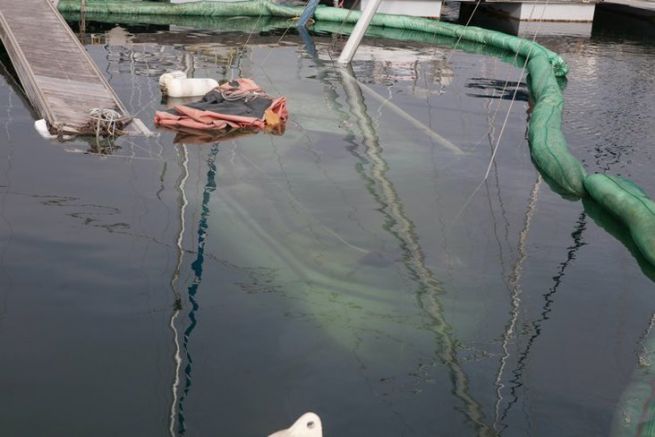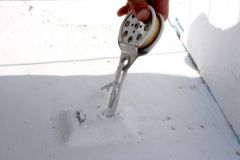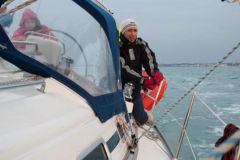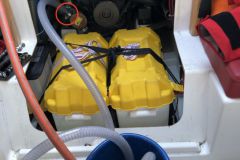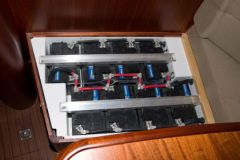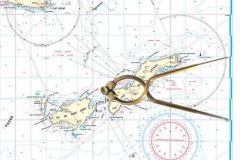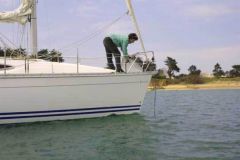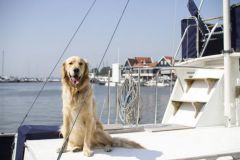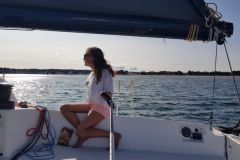We will review the different technologies used by the bilge pumps available on the market. And help you choose and install it.
There are 4 types of bilge pumps :
1-The manual siphon pump
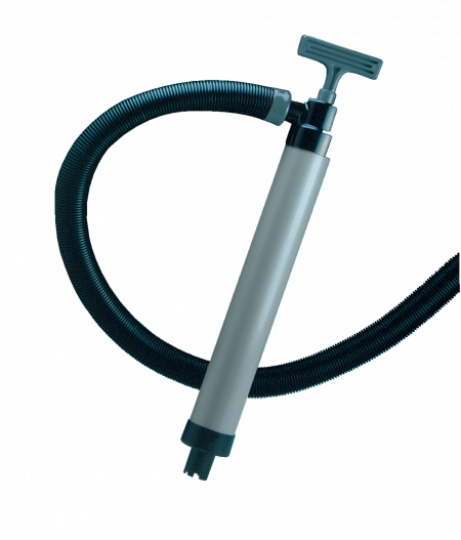
It's a small model that works on the principle of the syringe. Affordable and lightweight, it is able to access small corners. But its flow rate is too low to cope with a waterway. It requires no maintenance.
2- The manual diaphragm pump
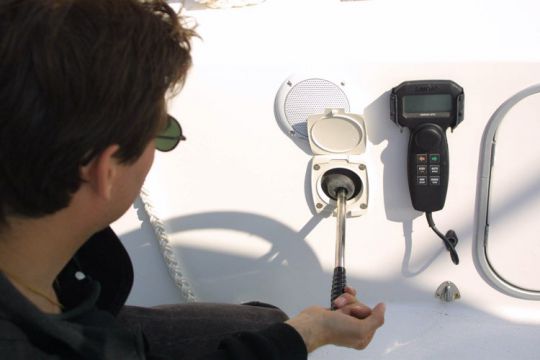
It's a fixed model that works with arm strength. Its flow rate varies from 25 to 100L/min. To be regulation, it must be accessible from the cockpit. It requires reduced maintenance, which consists of changing the membrane at the first signs of wear.
3-The electric submersible pump
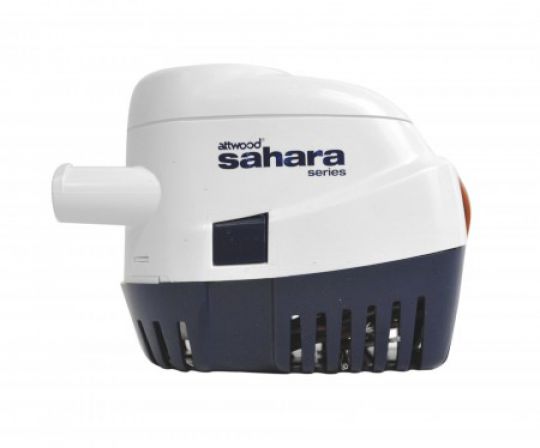
Totally waterproof, it is designed to be fully submerged. Available in 12 or 24 V, its consumption is quite low (between 1.5 and 4 A). It must be installed in the sump or in the lowest point of the boat. Its flow rate varies from 1500 to 4950 L/hour. Most of them are manually triggered, but some recent models have a built-in automatic switch. The filter must be checked every winter.
It is possible to add an "automatic" function to a submerged bilge pump by adding a mechanical automatic contactor.
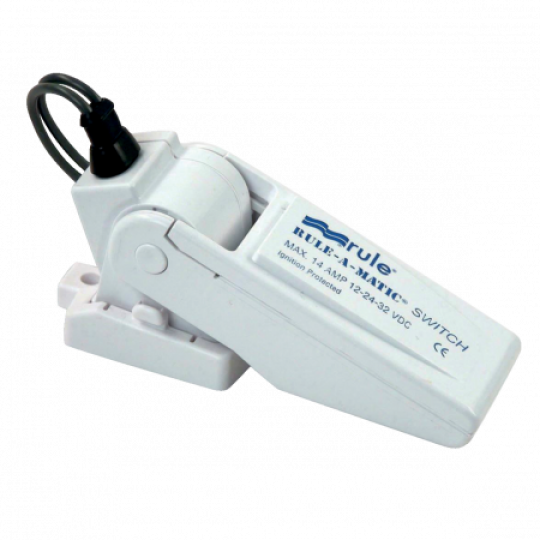
4-The remote turbine pump
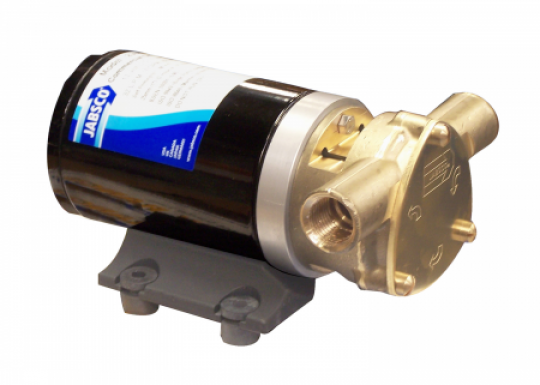
This is a top of the range model designed to be installed above the waterline. Available in 12 or 24 V, it can handle dirty water and small waste. Available with a flow rate from 1950 to 4500 L/hour, its bronze body allows both continuous use and increased resistance to hydrocarbons.
What are the criteria for optimal installation?
It's not enough to have a high-flow pump to feel safe.
The assembly of the pipes :
- Limit the length of the delivery and suction hoses as much as possible. (The hoses exert a great deal of resistance - friction - so the further the pump has to pump, the lower its output will be).
- Ideally, the distance between the pump and the through-hull passage should not exceed 1.5 m.
- Make sure to limit the pump's efforts by correctly dimensioning the delivery hose (25 mm for a medium pump and 38 mm for a high capacity pump).
- Always install only one pump per discharge line. Two pumps mounted on one line do not work better than one.
- Regularly clean the bottom of any debris that may block a switch or damage a pump.
- A non-return valve maintains priming and prevents the return of water into the hold.
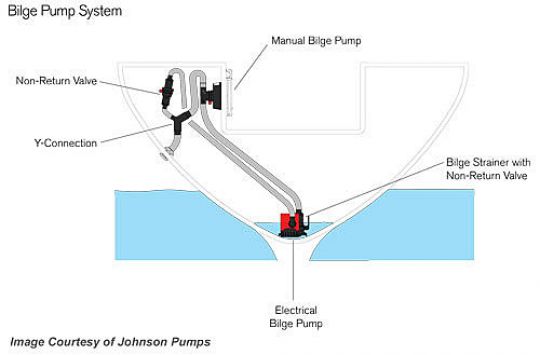
As an indication, a waterway (a hole) about 12 cm in diameter allows 120 litres/min, or 7.2 m3 per hour.
Electrical installation
The intensity required is not very important. Electrical wires with a cross-section of 1.5 mm2 may be sufficient.
For an electric pump to operate continuously, the batteries must be housed in a sealed container. Otherwise, your pump will stop working as soon as the water level reaches the battery pack.
If you need to extend your wiring, the use of heat-shrink tubing is essential to ensure the watertightness of your installation.
How to choose the pump flow rate according to the length of your boat?
A multitude of criteria differentiates each unit. There is therefore no universal rule to define the flow rate that best corresponds to one's boat.
Nevertheless, the following ratio can be estimated:
- Boat 3.5 to 5 m: minimum flow rate 1900 L/Hour
- Boat 5 to 7 m: minimum flow rate 3000 L/Hour
- Boat 7 to 9 m: minimum flow rate 4200 L/Hour
- Above 9 m, it is strongly advised to equip yourself with several pumps distributed in different places of your vessel.
The main pump should always be installed in the sump or under the motor
Other drying solutions exist
In the case of a boat equipped with an inboard engine, it is possible to mount a by-pass valve at the inlet of your engine cooling pump. This mounting allows the high flow of the engine and the ability to cope with a large waterway.
If the size of your vessel permits, a heat pump is very efficient, but requires regular and expensive maintenance.
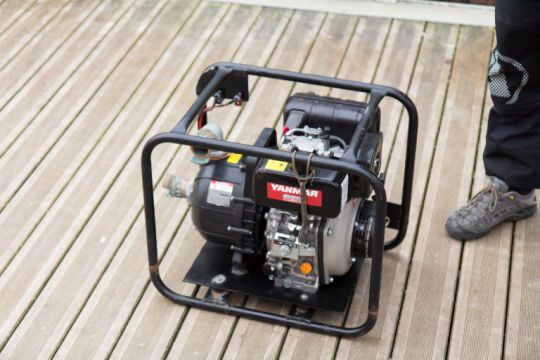
Namely, in the case of an offshore cruise program, some insurers contractually require a minimum flow rate and the presence of a water alarm.
